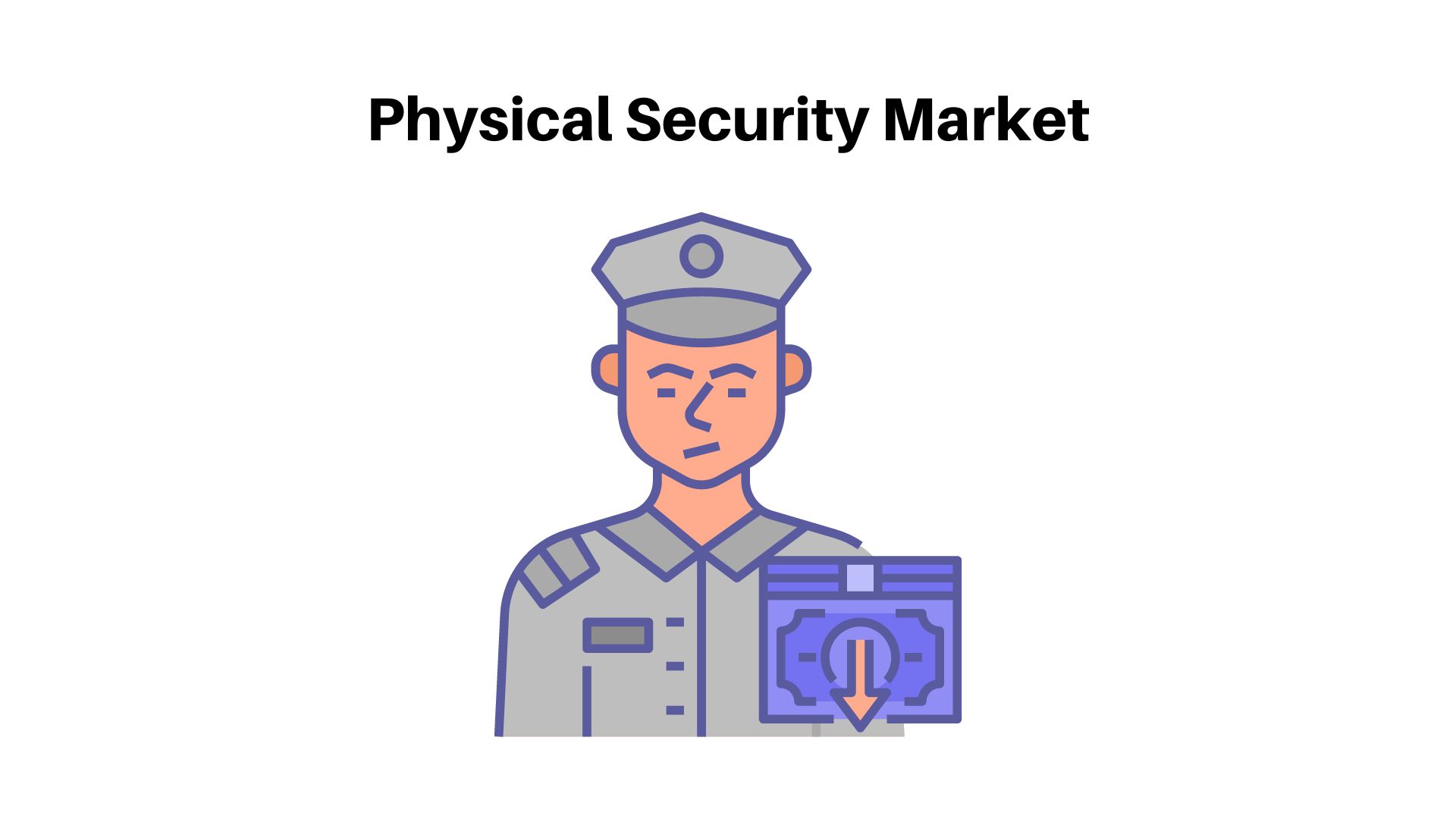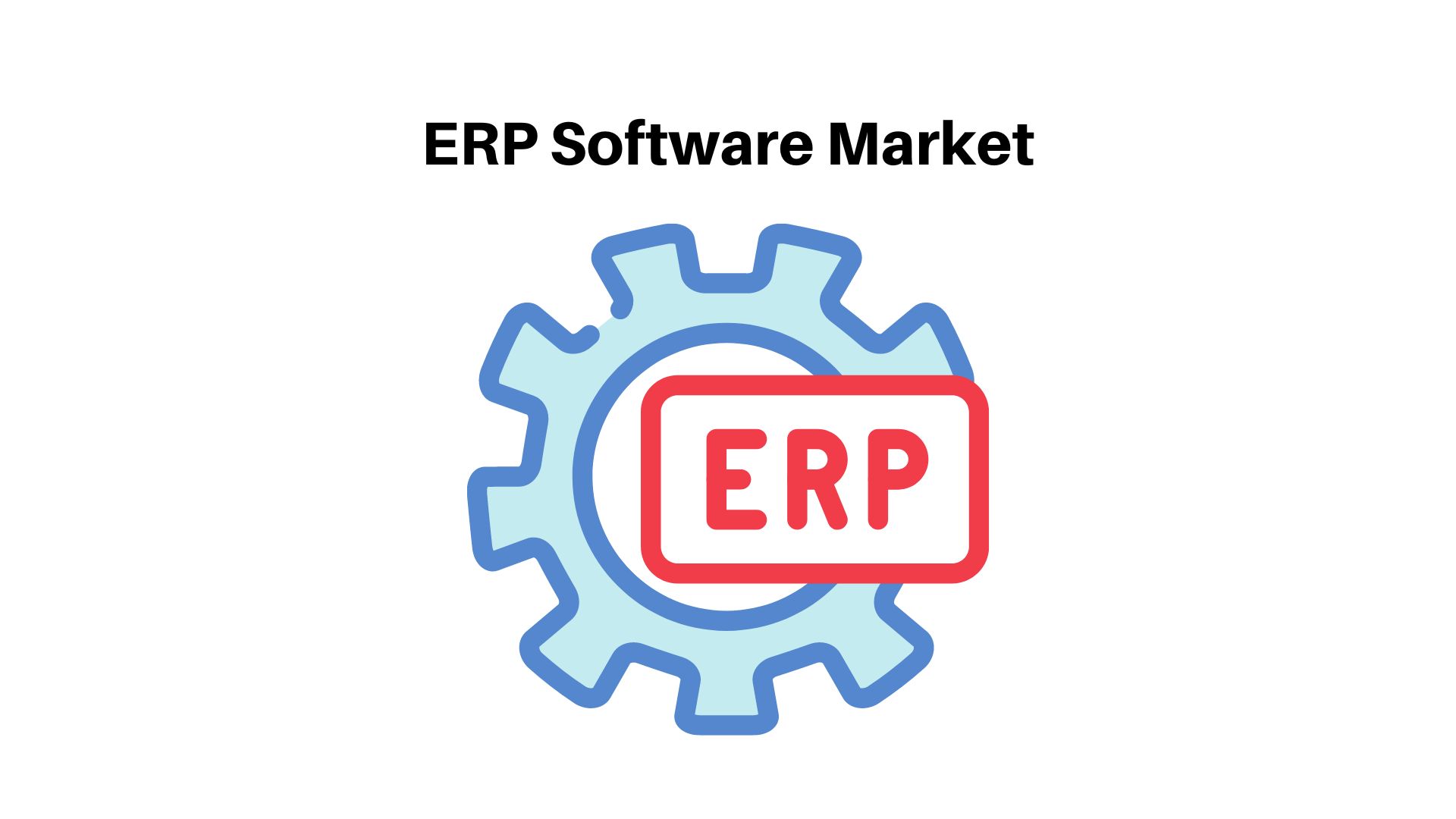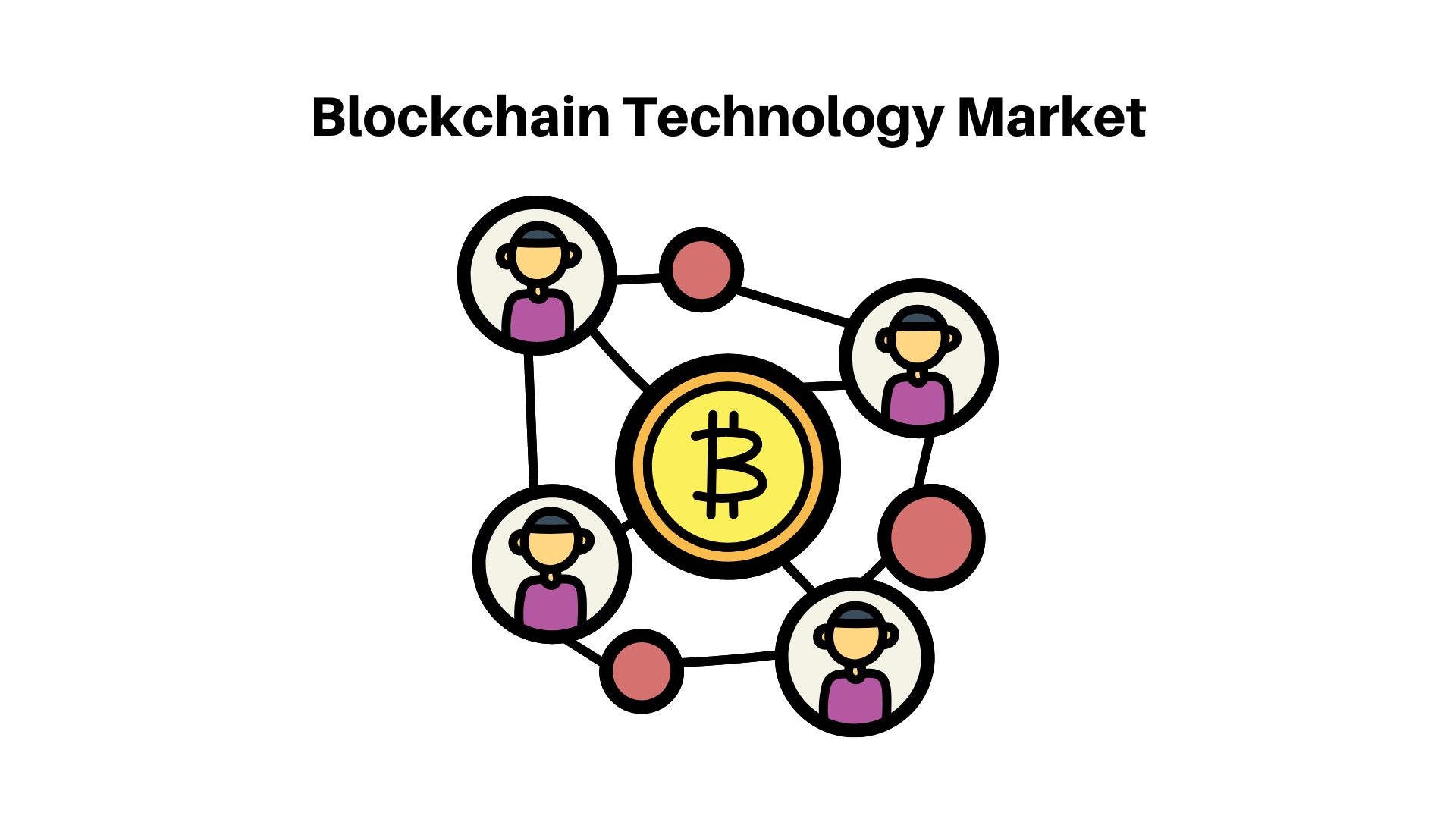Physical Security Market is Expected to Reach Around USD 190.98 Bn by 2032 | Market.us

Page Contents
Physical Security Market Overview
Published Via 11Press: The physical security market consists of products, systems, and services designed to guarantee physical safety for people, assets, and facilities. This sector includes items like access control systems, video surveillance systems, intrusion detection systems, perimeter security measures, and emergency notification systems.
The physical security market is being driven by various factors, including an increased incidence of crime, terrorism, and vandalism; the need for safety in public places and facilities; as well as the growing adoption of advanced technologies like AI, IoT, and cloud computing into physical security systems.
The global physical security market size is forecast to reach USD 190.98 billion by 2032 from USD 102.70 billion in 2022, rising at a compound annual growth rate (CAGR) of 6.40% during the forecast period.
Leading players in the physical security market include Honeywell International Inc., Bosch Security Systems, Inc., Tyco International Ltd., ADT LLC, Johnson Controls International plc, and Hikvision Digital Technology Co., Ltd. These companies provide a range of physical security products and services such as video surveillance systems, access control systems, and intrusion detection systems to meet varying demands.
The physical security market is expected to experience steady growth over the coming years, driven by factors such as increasing government regulations and mandates for physical security, smart cities and connected devices, and an increasing preference for cloud-based physical security solutions.

Key Takeaways
- The physical security market encompasses products, systems, and services designed to offer physical protection and safety to people, assets, and facilities.
- The market is driven by factors such as the rising incidence of crime, terrorism, and vandalism, the need for safety and security in public places and facilities, and the adoption of advanced technologies in physical security systems.
- Key players in the physical security market include Honeywell International Inc., Bosch Security Systems, Inc., Tyco International Ltd., ADT LLC, Johnson Controls International plc, and Hikvision Digital Technology Co., Ltd.
- The physical security market is anticipated to experience steady growth over the coming years, spurred by factors such as increasing government regulations and mandates for physical security, the growing trend towards smart cities and connected devices, and the rising adoption of cloud-based physical security solutions.
- The physical security market provides a range of products and services, such as access control systems, video surveillance systems, intrusion detection systems, perimeter security measures, and emergency notification systems.
Request For Sample Report: https://market.us/report/physical-security-market/request-sample/
Regional Snapshot
- North America: North America is one of the leading markets for physical security products and services, driven by the increasing adoption of advanced technologies as well as an increasing need for safety in public places and facilities. The United States leads this region followed by Canada and Mexico.
- Europe: Europe is a major market for physical security, driven by factors such as increased government regulations and mandates on physical security, along with the growing trend toward smart cities and connected devices. Top markets in this region include the United Kingdom, Germany, France, and Italy.
- Asia-Pacific: The Asia-Pacific region is one of the fastest-growing markets for physical security solutions, driven by factors such as rising crime and terrorism rates and an increasing need for safety in public places and facilities. China, Japan, India, and Australia are some of the major players in this space.
- Middle East & Africa: The Middle East and Africa have seen marked growth in the physical security market, driven by factors such as technological advancements and an increasing need for safety in public places and facilities. Saudi Arabia, UAE, and South Africa are some of the major markets within this region.
- Latin America: Latin America has seen exponential growth in the physical security market, driven by factors such as rising crime rates and an urgent need for safety in public places and facilities. Brazil, Mexico, and Argentina are three of the major markets within this region.
Drivers
- Increased Incidence of Crime, Terrorism, and Vandalism: With the increasing incidents of crime and terrorism, demand for physical security products and services has grown significantly in recent years. As a result, the physical security market has experienced remarkable expansion.
- Growing Need for Safety and Security in Public Places and Facilities: Public places such as airports, shopping malls, and hospitals are increasingly being targeted by criminals and terrorists. This has created an increased need for safety and security measures in these places – leading to an uptick in demand for physical security products and services.
- Increasing Adoption of Advanced Technologies: The physical security market has seen a meteoric rise in the adoption of cutting-edge technologies such as AI, IoT, and cloud computing. These advancements have allowed physical security systems to become more efficient, effective, and scalable.
- Government Regulations and Mandates: Governments around the world have implemented regulations and mandates for physical security in public places and facilities, driving demand for physical security products and services.
- The exponential growth of smart cities and connected devices: This phenomenon has opened up new prospects for physical security products and services. Physical security systems are being seamlessly integrated with smart city infrastructure to increase safety and security in public places and facilities.
Restraints
- Physical Security Systems Can Be Expensive: Installing and maintaining physical security systems can be expensive, which may deter smaller organizations or individuals from investing in them.
- Lack of Standardization: In the physical security industry, there is a lack of standardization which makes it difficult for customers to compare products and services from various vendors. This leads to confusion and makes it harder for buyers to make informed purchases.
- Privacy Concerns: Physical security systems such as video surveillance can raise privacy issues, especially in public places. This may limit their use in certain contexts.
- Installation and Integration Challenges: Installing physical security systems can present unique installation and integration issues when integrated into existing infrastructure, creating obstacles for organizations wishing to implement physical security measures.
- Cybersecurity Risks: As physical security systems become more interconnected and integrated with other systems, they become increasingly vulnerable to cybersecurity risks. This may prevent organizations from investing in physical security measures if they are concerned about such potential hazards.
Opportunities
- Increased Demand for Cloud-Based Physical Security Solutions: Cloud-based physical security solutions offer several advantages over traditional on-premise solutions, such as cost-effectiveness, scalability, and flexibility. Therefore, there is an increasing demand for these cloud-based physical security solutions – creating a significant opportunity for vendors in the physical security market.
- Growing Adoption of Artificial Intelligence and Machine Learning: As physical security systems look to leverage artificial intelligence and machine learning technologies to boost efficiency and effectiveness, vendors are being presented with an opportunity to develop AI-based physical security solutions that can meet this growing demand for these solutions.
- The rise of smart cities and connected devices: The rise of smart cities and connected devices presents physical security vendors with a unique opportunity. Physical security systems are increasingly being integrated into smart city infrastructure, creating an opportunity for vendors to develop solutions tailored to these environments.
- Emerging markets with a growing emphasis on safety and security: Emerging economies such as Asia-Pacific, Latin America, and Africa are experiencing rapid economic development which has given rise to an elevated focus on safety and security. This presents physical security vendors with an opportunity to expand their businesses into these regions by offering innovative products and services that can meet the growing demand for such protection measures.
Challenges
- Integration with Legacy Systems: Physical security systems often need to be integrated with legacy systems that may not be compatible with modern technologies. This presents challenges for organizations looking to implement physical security measures.
- The complexity of Physical Security Systems: Physical security systems can be intricate to install, configure, and monitor; this poses a challenge for organizations lacking technical know-how.
- Cybersecurity Risks: As physical security systems become more connected and integrated with other systems, they become increasingly vulnerable to cybersecurity risks. This presents challenges for organizations that are concerned about such matters.
- Cost Considerations: Physical security systems can be costly to install and maintain, which poses a challenge for organizations operating on tight budgets.
- Lack of Skilled Professionals: The physical security market is facing a shortage of highly qualified individuals with knowledge about the latest technologies and best practices in physical security. This poses challenges to organizations looking to implement physical security systems.
Grow your profit margin with Market.us Get this Report
Recent Developments
- Increased Adoption of AI and Machine Learning: The physical security market has witnessed an uptick in the use of artificial intelligence (AI) and machine learning technologies to improve accuracy and efficiency in security systems. These solutions can detect anomalies or potential threats early on, and automate tasks like monitoring, analysis, and response more efficiently.
- Cloud-Based Physical Security Solutions: Cloud-based physical security solutions are becoming increasingly popular due to their scalability, flexibility, and cost efficiency. These solutions can be easily deployed and managed from a central location, as well as integrated with other cloud-based systems.
- Integration with Smart City Infrastructure: The physical security market is increasingly focused on connecting physical security systems to smart city infrastructure. Smart city initiatives seek to enhance public safety, optimize urban infrastructure, and enhance citizens' quality of life – and physical security systems play a pivotal role in achieving these objectives.
- Video analytics: Video analytics is becoming more and more popular in the physical security market, offering real-time monitoring and analysis of video feeds. This technology can help detect potential security threats, monitor crowd behavior, and improve response times to security incidents.
- Concern for Cybersecurity: As awareness of cybersecurity risks associated with physical security systems grows, vendors are developing solutions to safeguard these assets and prevent cyber attacks. This includes implementing encryption, firewalls, and other measures designed to shield physical security devices from external attacks.
Key Market Segments
Type
- Access Control System
- Video Surveillance
- Physical Security Information Management
- Perimeter Intrusion Detection & Prevention
- Security Scanning, Imaging & Metal Detection
- Fire & Life Safety
Application
- Government, Defense & Public Sector
- Transportation & Logistics
- Telecom & IT
- BFSI
- Education
- Retail
- Oil, Gas & Energy
- Hospitality & Residential
Key Market Players
- ADT
- Hangzhou Hikvision Digital Technology
- SECOM
- Johnson Controls (Tyco)
- Anixter
- Cisco
- Genetec
- Honeywell
- Bosch Security
- Stanley
- Senstar
Nature Insights
- Increasing Demand for Integrated Solutions: There is an increasing need for physical security solutions that are easily integrated with other systems and technologies, such as access control systems, video surveillance, and alarms. This enables organizations to create a comprehensive security program capable of detecting potential threats in real-time and taking appropriate actions.
- Emphasis on Cybersecurity: As physical security systems become more interconnected and integrated with other systems, there is an increasing concern for cybersecurity risks. Vendors are developing new cybersecurity solutions to protect physical security systems and prevent cyber attacks.
- Focus on Automation: The physical security market is becoming more automated, using AI and machine learning technologies to automate tasks such as monitoring, analysis, and response. This can enhance the accuracy and efficiency of physical security systems while relieving security personnel of some of their tasks.
- Cloud-Based Physical Security Solutions Gain Popularity: Cloud-based physical security solutions are becoming more and more popular due to their scalability, adaptability, and cost efficiency. These can be easily deployed and managed from a central location and integrated with other cloud-based systems for maximum convenience.
- Collaboration and Partnerships: Vendors in the physical security market are increasingly working together with other vendors, integrators, and service providers to develop comprehensive security solutions. This enables organizations to design a tailored security program tailored to their individual needs and specifications.
Report Scope
| Report Attribute | Details |
| The market size value in 2022 | USD 102.70 Bn |
| Revenue forecast by 2032 | USD 190.98 Bn |
| Growth Rate | CAGR Of 6.40% |
| Regions Covered | North America, Europe, Asia Pacific, Latin America, and Middle East & Africa, and the Rest of the World |
| Historical Years | 2017-2022 |
| Base Year | 2022 |
| Estimated Year | 2023 |
| Short-Term Projection Year | 2028 |
| Long-Term Projected Year | 2032 |
Frequently Asked Questions
Q. What is the physical security market?
The physical security market refers to the market for technologies and services that protect physical assets and people from potential security threats. This includes technologies such as access control systems, video surveillance, alarms, and perimeter security solutions.
Q. What are the drivers of the physical security market?
The drivers of the physical security market include the increasing demand for enhanced security and safety measures, the growing awareness of cybersecurity risks, the adoption of IoT and cloud technologies, and the need for real-time monitoring and response.
Q. What are the major challenges in the physical security market?
The major challenges in the physical security market include integration with legacy systems, the complexity of physical security systems, cybersecurity risks, cost considerations, and the shortage of skilled professionals.
Q. What are the opportunities in the physical security market?
The opportunities in the physical security market include the adoption of AI and machine learning technologies, the growth of cloud-based solutions, the integration with smart city infrastructure, the increasing demand for video analytics, and the development of cybersecurity solutions.
Q. What are the recent developments in the physical security market?
Recent developments in the physical security market include the increased adoption of AI and machine learning, the growth of cloud-based solutions, the integration with smart city infrastructure, the increasing demand for video analytics, and the focus on cybersecurity.
The team behind market.us, marketresearch.biz, market.biz and more. Our purpose is to keep our customers ahead of the game with regard to the markets. They may fluctuate up or down, but we will help you to stay ahead of the curve in these market fluctuations. Our consistent growth and ability to deliver in-depth analyses and market insight has engaged genuine market players. They have faith in us to offer the data and information they require to make balanced and decisive marketing decisions.


